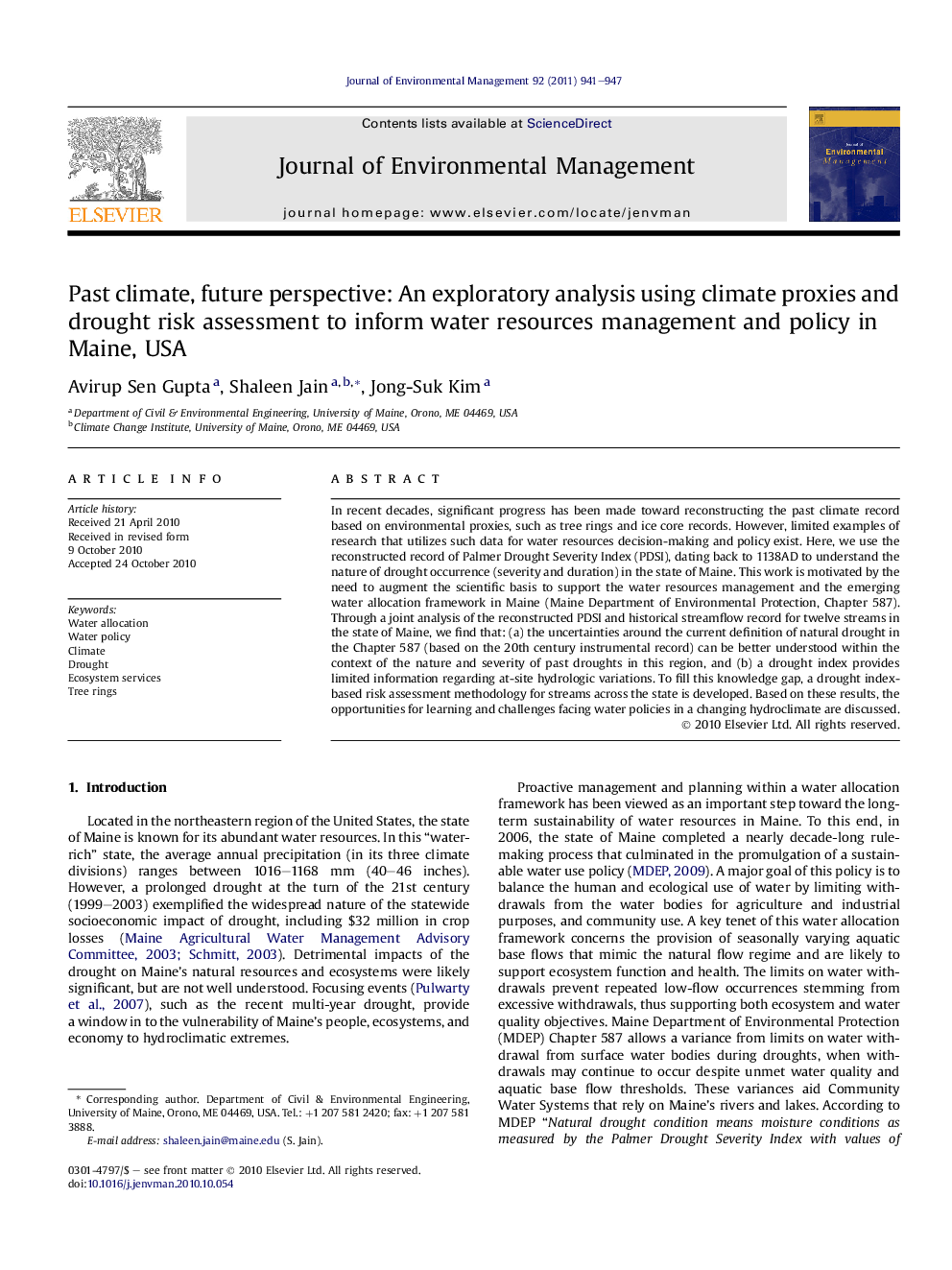| Article ID | Journal | Published Year | Pages | File Type |
|---|---|---|---|---|
| 10505560 | Journal of Environmental Management | 2011 | 7 Pages |
Abstract
In recent decades, significant progress has been made toward reconstructing the past climate record based on environmental proxies, such as tree rings and ice core records. However, limited examples of research that utilizes such data for water resources decision-making and policy exist. Here, we use the reconstructed record of Palmer Drought Severity Index (PDSI), dating back to 1138AD to understand the nature of drought occurrence (severity and duration) in the state of Maine. This work is motivated by the need to augment the scientific basis to support the water resources management and the emerging water allocation framework in Maine (Maine Department of Environmental Protection, Chapter 587). Through a joint analysis of the reconstructed PDSI and historical streamflow record for twelve streams in the state of Maine, we find that: (a) the uncertainties around the current definition of natural drought in the Chapter 587 (based on the 20th century instrumental record) can be better understood within the context of the nature and severity of past droughts in this region, and (b) a drought index provides limited information regarding at-site hydrologic variations. To fill this knowledge gap, a drought index-based risk assessment methodology for streams across the state is developed. Based on these results, the opportunities for learning and challenges facing water policies in a changing hydroclimate are discussed.
Related Topics
Physical Sciences and Engineering
Energy
Renewable Energy, Sustainability and the Environment
Authors
Avirup Sen Gupta, Shaleen Jain, Jong-Suk Kim,
